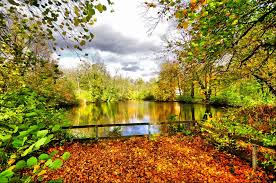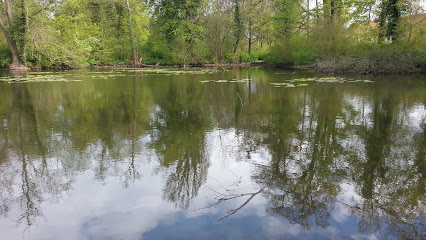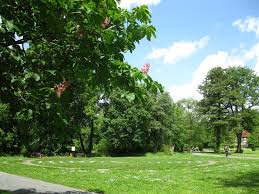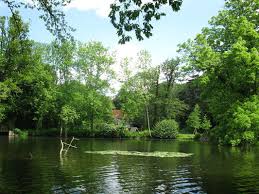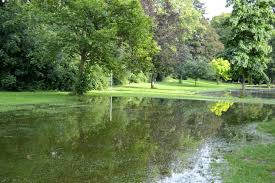Location and size
The 4.8-hectare park is located outside the fortifications of the former town south of the Church of St. Goodyard and directly connected to the stairs, which connects with the other south on the other side of Innerste recreational area around the swimming pool Johanniswiese and Hohnsensee combines. In the east, Weinbergsviertel with its comfortable development, where in the immediate vicinity of the park since 2012 in the former location of the municipal hospital, a new residential area was created.
The northern border of the city of Ernst is the Dyesgraben Park, part of the medieval fortifications of Hildesheim. It is bordered by the west and south trench mill, one of the deepest tributaries, and in the east a steep slope of Inerstetales on vineyards.
Date
The history of the park begins as the garden of the Godehardiklosters Monastery, which was first mentioned in a document dated 11 March 1146. The monks placed three fish ponds here and even the wine planted on the slope of the Karam Day road. When the fortifications of the city were built in 1461, the northern pond of the old and new town of Hildesheim stretched to the trench in front of the new wall.
After the secularization, the area was transferred to the city and in 1803 the merchant and bank of Hildesheim Gerhard Gottfried Dies left the tenant, where she bought the property's widow in 1843. In the mid-nineteenth century, before buying the site, the family of dyes had a former gardener's house built by a pond , A two-story semi-wooden house temporarily used by the Tasting Foundation at the end of the 20th century. 1881 Construction of a villa above the park in the vineyard of the street was followed by the architect and builder of the main city Gustave Schwartz. Around 1885, Villa Dyes was recreated in a garden style with English landscapes. Here, the Bürgerpark in Bremen was a model, where the owner of the villa, the Austrian Consul General Gottfried Ludwig Dyes (grandson of Gerhard Gottfried pigments), was formerly living in Bremen.
In 1917, the town of Hildesheim took over the garden of Villa Dyes as the Stadtpark, but only from 29 June 1929 was open to the public as "Dyes-Park". The park received its present name in 1938, when the mayor of Hildesheim, Ernst Erlicher, retired. World War II survived Ernst Erlich Park without much damage.
Today, the original concept of the English landscape park in Ernst Ehrlich Park is still known. Featuring large lawns, mature trees, small bridges and interconnected ponds, it is a popular destination for many pedestrians.
In 2008, as well as in other urban green spaces, deep logging in Ehrlichpark, causing the residents' anger and the city administration was triggered by suspicion of their desire to reap money from wood.
Flora and Fona
In the park occurs ants Kahlrückige forest rare protected. Some of its large nests can be seen clearly near the dam trench in hot and light areas. A rare parasite was also represented in the Ernst-Erlich Park, which in March and April was the flowering of Chubnors (Lathraea). In ponds in the garden, you can sometimes observe the colorful, but rare Alcedo atthis, and show a small owl on a regular basis. In the garden and the surrounding fences there are several types of original bats, such as the big noise, the water racket, the bat and the dwarf bat. In order to protect bats and birds that multiply in trees, the park's development concept has identified 30 "habitat trees" in 2016, which should be preserved as much as possible despite the poor conservation situation in part.
Art in the garden
The Association of Architects and Engineers Hildesheim and Kunstfrenen Hildesheim held a competition in 2005 looking for technical opportunities to further develop Ehrlicherpark. The first prize went to Hannover Frank Frank Schulz and his concept of the Ernst Ehrlich Institute as the world's first institute for experimental park research. The Institute began its work in 2006 and carried out nine technical experiments and interventions in the park by January 2007, which were transferred from a Web camera and documented on a website.
As a "forum for all" in 2006, the women's maze created a maze of roses with a diameter of 23 meters and a total length of 600 meters.

